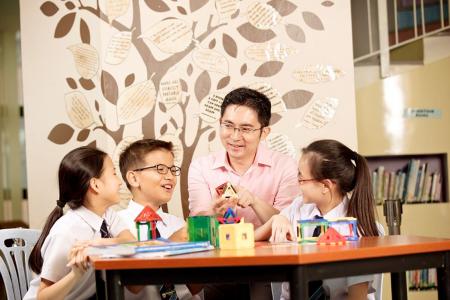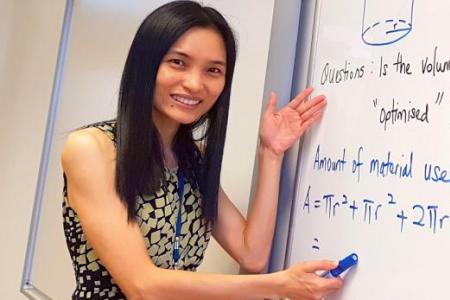He uses mystery to teach mathematics
This teacher uses unusual methods to make learning maths more interesting
In his classroom, mathematics concepts are taught through escape rooms, fidget spinners and detective mysteries.
Mr Tan Choon Shing uses unusual methods to engage his pupils in applying the concepts to real-life scenarios.
The 42-year-old, who became head of department (HOD) for maths at Pei Hwa Presbyterian Primary two years ago, did not want them to learn by rote.
He held a Maths Week last year that had activities such as an escape room, in which the pupils had about eight minutes to "escape" by solving puzzles.
Mr Tan said: "I have tried the escape room before, and I could identify with the thrill and excitement, so I thought why not scale it down and bring it to the children here?"
He was one of 17 finalists in the President's Award for Teachers across all levels this year.
ENRICH
HOD for student management Chung Li Koon, who also teaches maths, said the teachers had seen how Mr Tan enriched the pupils' learning.
She said: "Choon Shing will usually challenge us to try new things to benefit our pupils."
Mr Tan also developed a detective mystery series for his Primary 6 pupils to solve.
The maths teachers are also encouraged to use diagnostic marking, where pupils who make errors are asked to identify the concepts they did not understand instead of just copying down the right solutions.
The father of two primary school kids, aged nine and 11, also coaches his children the same way.
He said: "I try not to give them too much guidance before they submit their homework, if not it will not be reflective of their true abilities."
NYP students learn maths during field trips to USS
Fancy going on an excursion to Universal Studios Singapore (USS) to learn mathematics?
Ms Lily Soh, 47, and her colleagues at Nanyang Polytechnic came up with the concept.
Ms Soh, who has been a manager of the Engineering Mathematics and Science Group at the School of Engineering since 2014, told The New Paper: "I believe the traditional way of teaching... is not enough."
Two years ago, she and her team brainstormed for new methods to engage their tech-savvy students.
Now, at USS, students must complete tasks such as finding out how tall are the statues outside a ride. The students must use a combination of trigonometry and mobile applications to find the solutions.
The team also introduced projects to help students apply concepts to real-world settings, such as using cans in grocery stores to discuss calculus.
A recipient of the PS21 Distinguished Star Service Award this year, Ms Sohsaid: "Solving maths problems is usually procedural and students may feel bored. But when students realise applications of maths exist in real life, they become more excited."- ELAINE LEE
Get The New Paper on your phone with the free TNP app. Download from the Apple App Store or Google Play Store now



